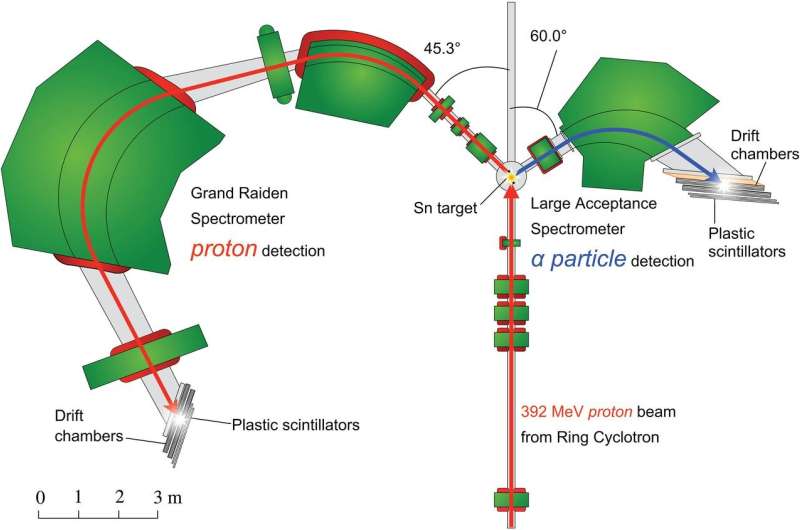January 15, 2021 report
Precise measurements of cluster formation in outer neutron 'skin' of a range of tin isotopes

A large international team of researchers has developed a way to measure cluster formations in the outer neutron 'skin' of a range of tin isotopes rich in neutrons. In their paper published in the journal Science, the group describes using knockout reactions to obtain evidence of the formation of α clusters at the surface of tin isotopes rich in neutrons. Or Hen, with MIT, has published a Perspectives piece in the same journal issue outlining the study and its relevance to neutron star research.
α decay is a type of radioactivity involved with heavy isotopes when particles with pairs of protons and neutrons are lost to the environment around them. Physicists have been studying α decay for over a century and still do not fully understand where and when the lost particles are formed. In this new effort, the researchers sought to learn more about α decay and the nature of the particles involved.
As the researchers note, heavy nuclei provide an important means for studying neutron-rich matter. Such materials tend to have an outer skin of isotopes. The skin is an area where the density of neutrons is greater than the density of protons in the nuclei—it is typically impacted by cluster formation in outer areas where density is lower.
The work by the researchers involved firing high-energy protons at tin isotopes and then studying the ejected particles. They were able to measure cluster formation (made of helium-4 nuclei) very precisely in the skin for a wide range of tin isotopes of the type that could be used to build models.
In addition to providing physicists with a way to precisely measure cluster formations, the work might also help astrophysicists better understand the interactions between the protons that are left over when a neutron star forms, and shed light on the neutrons in the star's center. As Hen notes, doing so would allow for modeling the neutron star equation of state. He also suggests that the work could lead to calls for new levels of precision in theoretical calculations that account for nuclear clusters and correlations.
More information: Junki Tanaka et al. Formation of α clusters in dilute neutron-rich matter, Science (2021). DOI: 10.1126/science.abe4688
Or Hen. From nuclear clusters to neutron stars, Science (2021). DOI: 10.1126/science.abf2427
Journal information: Science
© 2021 Science X Network





















